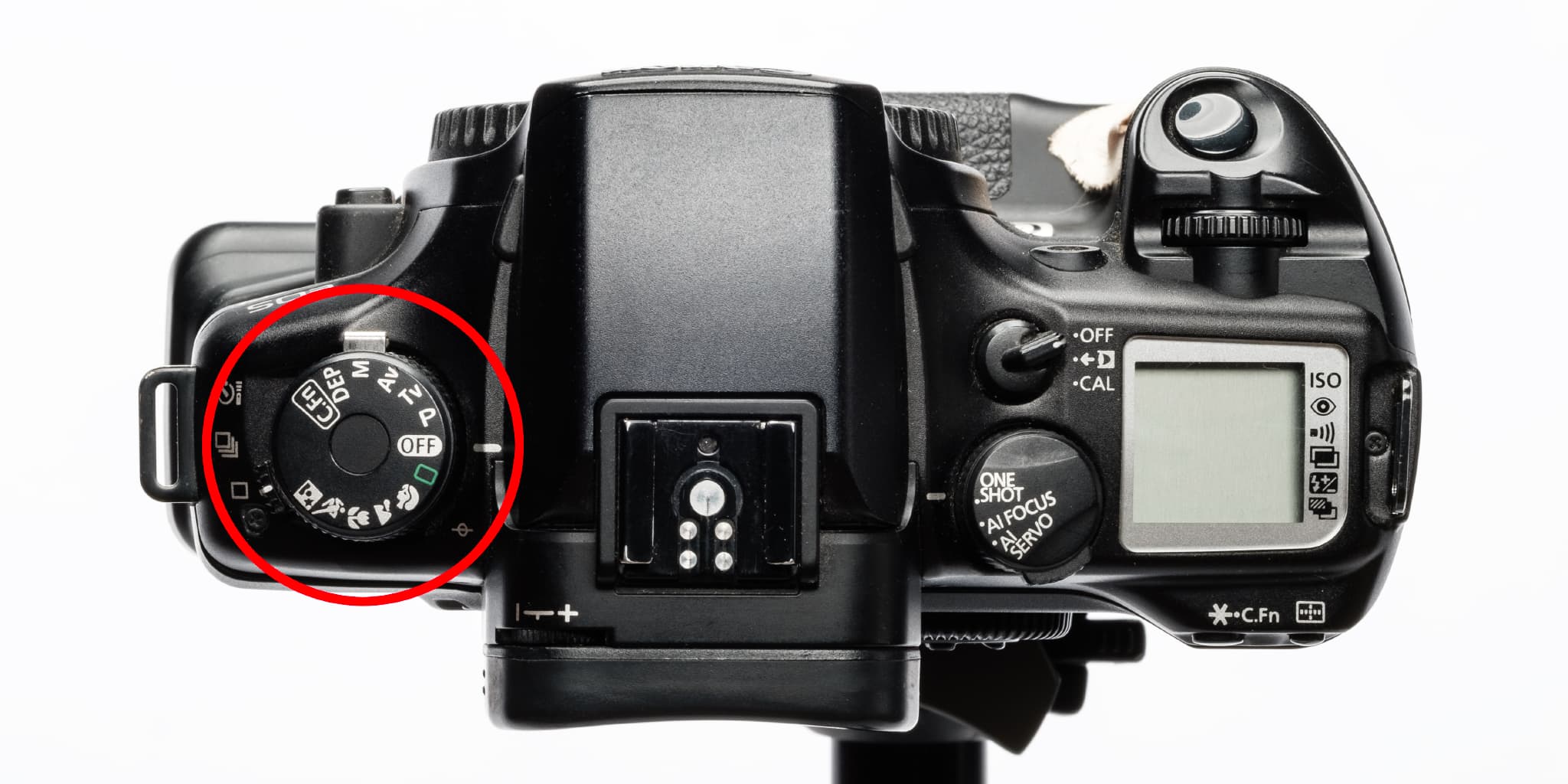
Your choice of shooting mode (or exposure mode) establishes which camera settings and controls you can access. The most common way to select shooting modes is via the mode dial at the top of most cameras. Depending on your camera and its layout, you may have access to some or all of the following shooting modes.
Auto mode
In this mode, you relinquish almost all control to the camera for a fully automatic experience. Your sophisticated camera becomes a simple “point-and-click” device that automatically analyzes the scene to determine whether it’s a portrait, landscape, sports, close-up, or another traditional subject and automatically assigns the optimum settings. You can typically select picture resolution and, sometimes, image file format; however, more sophisticated functions are inaccessible.
Auto mode without flash. In auto mode, cameras with built-in flash will automatically deploy it when necessary. For situations in which flash is undesirable, some cameras have a “flash off” auto mode that allows you to suppress its use while retaining the fully automatic experience.
Automatic scene modes
In these modes, you select a scene that best matches your subject, and the camera determines the optimum picture settings automatically based on photographic conventions. The main difference between automatic scene modes and auto mode is that the latter attempts to guess your subject matter, and the former takes the guesswork out of the equation. Let’s take a look at the most common scene modes:
Portrait mode. This shooting mode makes your portrait subject more prominent and lends the composition a greater depth by blurring the background. It also processes colour to produce skin tones and hair that look softer and more pleasing.
Landscape mode. This shooting mode is designed for taking landscapes, cityscapes, and other expansive vistas. It aims to sharply focus everything from near to far. Colours are processed to render vivid blues and greens. In general, the built-in flash will not fire.
Sports mode. This shooting mode is intended for taking photos of fast-moving subjects. It aims to freeze action using fast shutter speeds. Many cameras will activate high-speed continuous shooting, which captures pictures in quick succession as long as you keep the shutter button pressed down. The built-in flash will not fire.
Macro or Close-up mode. This shooting mode is intended for photos of flowers, insects, and other small subjects. The camera will automatically focus on the subject in the centre of the composition.
Night portrait mode. This shooting mode is intended to balance the main portrait subject and background when photographed under low light. The camera will fire the built-in flash to light the portrait subject and use a slow shutter speed to expose the background adequately.
Advanced shooting modes
These shooting modes are typically reserved for advanced and interchangeable-lens cameras. They allow you to obtain creative results by taking full or partial command of the main exposure controls—selecting the shutter speed and aperture—and giving you full access to manipulate camera settings. Let’s take a look at some of the standard advanced shooting modes:
Program mode. This shooting mode is referred to as “P” or “Program AE” (for Auto Exposure). When Program mode is engaged, the camera analyzes the scene and automatically sets the optimum shutter speed and aperture to suit the subject’s brightness.
Shutter priority mode. This shooting mode is often referred to as “S” or “Tv” (for Time value). In Shutter priority mode, you set the desired shutter speed depending on whether you intend to freeze action or create motion blur, and the camera analyzes the scene and automatically sets the optimal aperture to suit the subject’s brightness. (Find out more about the effects of the shutter speed. For hands-on learners, shutter speed and motion are covered in workshop 103: Shutter Speed.)
Aperture priority mode. This shooting mode is often referred to as “A” or “Av” (for Aperture value). In Aperture priority mode, you set the desired aperture depending on whether you want to blur the background or make all subjects near and far appear sharply focused, and the camera analyzes the scene and automatically sets the optimum shutter speed to suit the subject’s brightness. (Find out more about the effects of the aperture. For hands-on learners, we discuss the effects of the aperture and depth of field in workshop 102: Aperture & Lens.)
Manual mode. This shooting mode is often called Manual Exposure. In Manual mode, you set the shutter speed and aperture values to achieve both the exposure and creative results you desire. Although the camera continues to analyze the scene to provide you with light measurement information, it does not automatically adjust any exposure controls. (Find out more about setting manual exposures. For hands-on learners, we teach manual exposure and autofocusing techniques in workshop 104: Manual Exposure.)
Help Support This Guide
If this guide has been helpful, consider using these affiliate links to make your next purchase. It won’t cost you extra, and it helps me continue creating free content! For new photography gear, check out Adorama, Henry’s, or eBay. And if you’re shopping for anything on Amazon, using this link supports my work, too. For editing, consider subscribing to Adobe Lightroom Classic. Thanks for your support!
